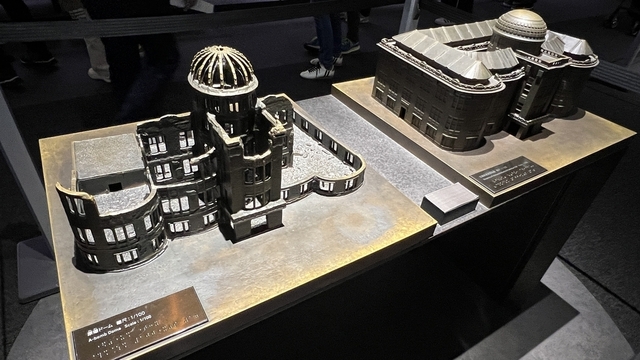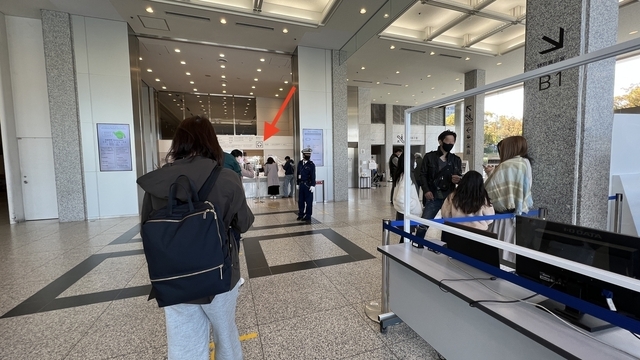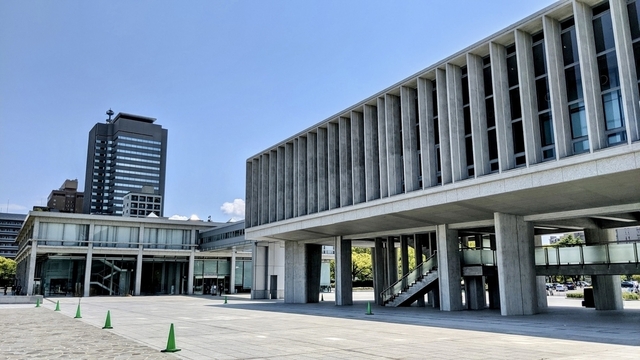What is the Hiroshima Peace Memorial Museum?
The Hiroshima Peace Memorial Museum (広島平和記念資料館) is a facility dedicated to preserving records related to the atomic bomb dropped on Hiroshima on August 6, 1945, and to promoting the importance of peace.
The museum exhibits photographs, personal belongings, and testimonies that convey the devastating impact of the bomb, offering visitors a chance to learn about the horrors of war and the value of peace.
Located within Hiroshima Peace Memorial Park (ひろしまへいわきねんこうえん), the museum is a must-visit spot alongside the Atomic Bomb Dome (げんばくドーム) and the Peace Bell (へいわのかね). It attracts over two million visitors annually from around the globe. The museum was renovated in 2019, enhancing its exhibits further.
The museum’s mission is to convey the tragedy of the atomic bombing to future generations and contribute to the abolition of nuclear weapons and the realization of lasting peace.

Highlights
The Museum Layout
The Hiroshima Peace Memorial Museum consists of two main buildings: the Main Building and the East Building, each featuring unique exhibits.
- Main Building
The Main Building displays photographs, videos, and personal belongings that vividly recreate the circumstances in Hiroshima when the atomic bomb was dropped. Testimonies from survivors and dioramas depicting the cityscape at the time leave a powerful impression on visitors. - East Building
The East Building focuses on the history of nuclear weapons development and the current state of nuclear weapons worldwide. It also introduces the museum’s philosophy and its efforts toward peace, serving as an educational hub for peace-related learning.
Moving Displays of Personal Belongings
One of the most poignant sections of the museum is its collection of personal belongings of atomic bomb victims. These include charred clothing, melted watches, and pencil boxes once used by students—objects that narrate the daily lives of those affected.
These items poignantly illustrate the devastating effects of the bomb and encourage visitors to reflect on the importance of peace.
The Peace Bell
Located outside the museum, the Peace Bell (へいわのかね) is another must-see feature. Representing prayers for peace, this bell can be rung freely by visitors. Each resonant chime symbolizes a hope for peace spreading across the world.
Activities to Enhance Your Visit
Praying for Peace
Around the museum and the Atomic Bomb Dome (げんばくドーム), visitors can engage in folding origami cranes as a prayer for peace. This activity is especially meaningful for families with children, offering a hands-on way to learn about the importance of peace.
Sightseeing by Boat
A cruise along the Motoyasu River (もとやすがわ) is highly recommended. The view of Hiroshima from the river is stunning, providing a unique perspective of the city’s historical landmarks.

Frequently Asked Questions and Tips
Q1: How much time should I allocate for a visit?
Plan to spend about 2–3 hours at the museum. Taking your time with each exhibit will deepen your understanding of its contents.
Q2: Can I take photographs?
Photography may be prohibited in certain areas, particularly in sections displaying personal belongings, to preserve privacy and respect. Please adhere to posted guidelines.
General Information
- Access
From Hiroshima Station, the museum is about a 20-minute ride by tram. Get off at the Atomic Bomb Dome-mae (げんばくドーム前) stop and walk about 5 minutes. It is also within walking distance from the Hiroshima Bus Center. - Admission Fee
- Adults: 300 yen
- Middle and High School Students: 200 yen
- Elementary School Students: Free
- Operating Hours
- 8:30 AM – 5:00 PM (Hours may vary by season.)
Check the official website for the most up-to-date information.
- 8:30 AM – 5:00 PM (Hours may vary by season.)
- Official Website
Visit the Hiroshima Peace Memorial Museum’s official site for detailed information.

Conclusion
The Hiroshima Peace Memorial Museum (広島平和記念資料館) is a place that encourages learning about the importance of peace and reflecting on the past to envision a better future. It is one of Japan’s most meaningful destinations, rich in historical and cultural significance.



